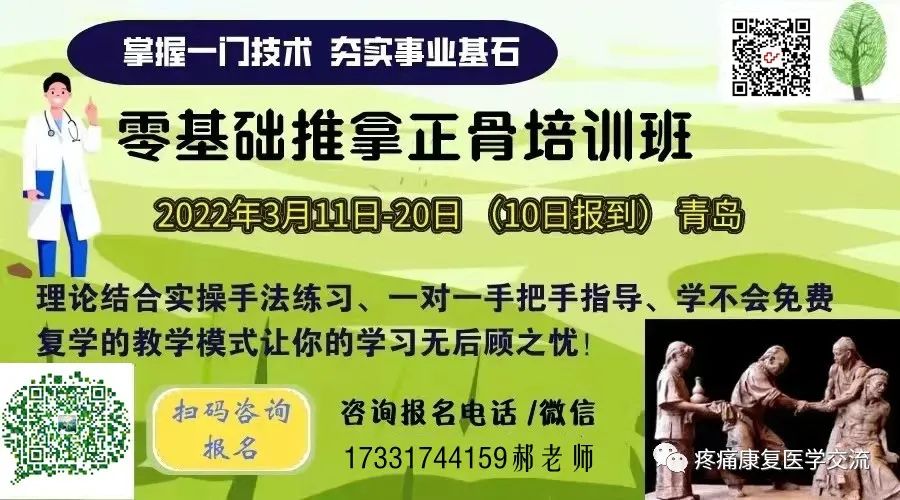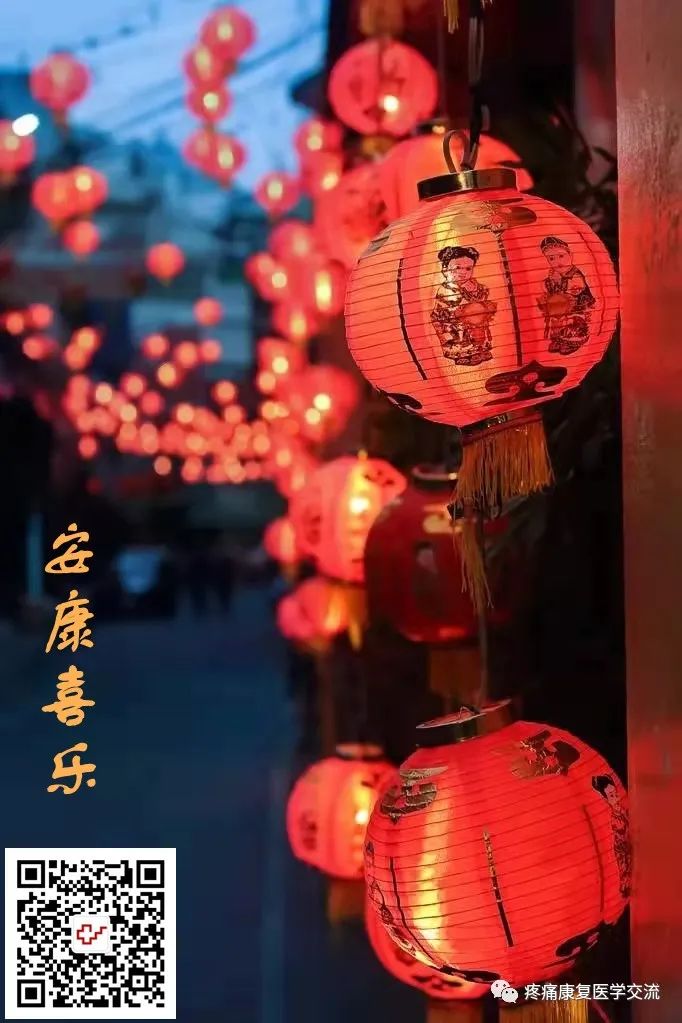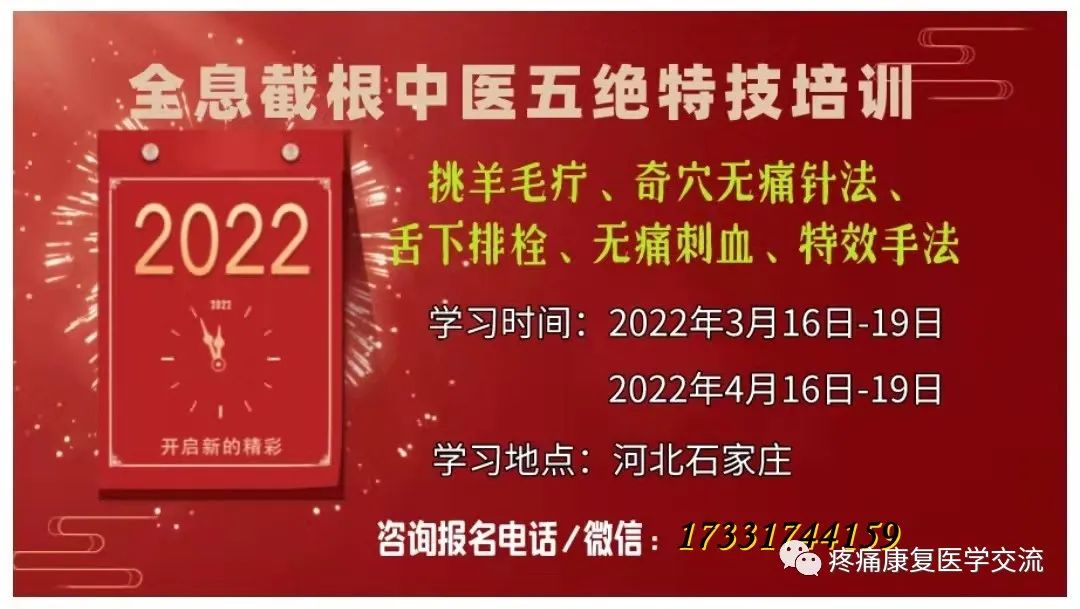
1. Acupuncture Treatment for Six Difficult Conditions
1. Bitter Mouth: Currently, there are no effective medications available domestically or internationally. According to TCM theory, this condition is due to heat in the San Jiao (Triple Burner) meridian. Use a three-edged needle to puncture the Guan Chong (关冲) point and draw a drop of blood the size of a mung bean, once every other day; two treatments may cure it.
2. Foul Breath: This is a common condition, and there are currently no effective medications available. TCM theory considers this condition to be due to heat in the Heart meridian. Acupuncture at the Da Ling (大陵) point, once a day; two treatments can eliminate the foul breath.
3. Rib Pain (Intercostal Neuralgia): This is a common condition with no effective medications available. Acupuncture at the Zhi Gu (支沟) point, once a day; two treatments may cure it. This method is simple and effective, and should not be taken lightly.
4. Malaria: Acupuncture at the Da Zhui (大椎), Qi Men (期门) (dispersing), and Guan Yuan (关元) points, followed by moxibustion at each point for nine sticks. The next day, needle Feng Chi (风池) (dispersing) and Zhong Wan (中脘) (dispersing), followed by moxibustion at Zhong Wan for nine sticks. On the third day, needle Tian Shu (天枢) (dispersing) and Huang Shu (肓俞) (dispersing), followed by moxibustion at each point for nine sticks. This constitutes one treatment course. If there is no onset, one treatment course is needed; if there is an onset, two treatment courses are required. This method has immediate effects and is rarely recurrent.
5. Insomnia: Acupuncture at Da Zhui (大椎), Tao Dao (陶道), and Xin Yu (心俞). Effective.
6. Hypersomnia: Acupuncture at Da Zhui (大椎), Tao Dao (陶道), and Pi Yu (脾俞). This method has immediate effects, and usually two treatments can lead to recovery.
2. Acupuncture Treatment Point Formulas
1. He Gu (合谷), Fu Liu (复溜)
Function: Induce sweating, stop sweating
Indications: Used for both deficiency and excess sweating (spontaneous sweating, no sweating)
Formula Explanation: Fu Liu belongs to the Kidney meridian; tonifying it can warm the Kidney and strengthen Yang, consolidate the exterior, while dispersing He Gu can clear heat from the Qi level, thus stopping sweating. Tonifying He Gu lightly raises and expels pathogens, while dispersing Fu Liu prevents the exterior from consolidating, leading to sweating.
2. Bai Hui (百会), Shui Gou (水沟), Feng Fu (风府)
Function: Revive consciousness and open orifices
Indications: All sudden fainting and syncope
Formula Explanation: Bai Hui is the meeting point of the three Yang meridians of the hands and feet with the Du meridian and the Jue Yin Liver meridian, having the function of unblocking Yang, calming the spirit, relieving tension in the Jue Yin tendons, and clearing the mind. Shui Gou is the meeting point of the Du meridian and the Yang Ming meridians of the hands and feet, which is the sea of all Yang; dispersing this point can unblock the Du meridian, clear the Yang Ming, adjust Qi, and open orifices to rescue emergencies. Feng Fu is the meeting point of the Tai Yang meridian of the foot, Yang Wei meridian, and Du meridian; needling this point can expel wind evil from the brain. The combination of these three points can open the orifices, leading to awakening and fluent speech, turning danger into safety.
3. Jian Yu (肩髃), Qu Chi (曲池) (Main points for upper limb treatment)
Function: Unblock Qi and blood, expel wind and eliminate dampness
Indications: All syndromes of meridian obstruction, Qi and blood stagnation, such as stroke, hemiplegia, and various upper limb disorders.
Formula Explanation: Both points belong to the Yang Ming meridian; needling Jian Yu can unblock, while Qu Chi flows without restraint, thus treating all syndromes of meridian obstruction and Qi and blood stagnation in the upper limbs.
4. Huan Tiao (环跳), Yang Ling Quan (阳陵泉) (Main points for lower limb treatment)
Function: Unblock tendons and joints, harmonize Qi and blood
Indications: Stroke hemiplegia, various bi syndromes, numbness, weakness, etc. in the lower limbs.
Formula Explanation: Both points belong to the Shao Yang meridian of the foot, capable of relaxing and dispersing. Yang Ling Quan is also a meeting point for tendons, having the function of relaxing tendons and joints, while Huan Tiao expels wind from the meridians; the two points complement each other.
5. Qu Chi (曲池), Yang Ling Quan (阳陵泉)
Function: Relax tendons and joints, clear and drain
Indications: Numbness in the upper and lower limbs, chest and rib pain, abdominal distension due to heat in the stomach and intestines.
Formula Explanation: Qu Chi and Yang Ling Quan are located at the elbow and knee, both being major joints; Qu Chi promotes Qi and blood flow through the meridians, clearing the lungs and dispersing. Yang Ling Quan can also relax tendons and joints, drain the liver and gallbladder, and clear the interior, thus promoting drainage and clearing heat, alleviating chest and rib pain, or abdominal distension due to heat accumulation in the intestines and stomach.
6. Qu Chi (曲池), San Yin Jiao (三阴交)
Function: Clear heat, cool blood, dispel stasis, and generate new
Indications: Women’s menstrual disorders, excessive bleeding, leukorrhea, accumulation of toxic sores, various swellings and pains, and heat-related conditions.
Formula Explanation: Qu Chi is good at clearing heat and expelling wind, while San Yin Jiao is the meeting point of the three Yin meridians, serving as a hub for the Liver, Spleen, and Kidney, making it a key point for treating blood-related issues. The combination of these two points can clear blood stasis and heat toxins.
7. Zu San Li (足三里), San Yin Jiao (三阴交)
Function: Tonify Qi and nourish Yin, strengthen the Spleen and replenish deficiency
Indications: Spleen and stomach deficiency with cold, poor appetite, undigested food, thin body, or vomiting and diarrhea, numbness and pain in the legs.
Formula Explanation: San Li raises Yang and benefits the stomach, while San Yin Jiao nourishes Yin and strengthens the Spleen, making it essential for treating deficiencies. If the stomach is strong and the Spleen is weak, tonifying San Yin Jiao while dispersing Zu San Li can nourish Yin while also clearing turbid Qi. If Yang is deficient and Qi is weak, leading to bi syndromes with numbness and pain in the legs, tonifying Yang and harmonizing Yin can relieve the symptoms.
8. Yang Ling Quan (阳陵泉), Zu San Li (足三里)
Function: Harmonize Liver and Spleen, soothe the Liver and strengthen the stomach
Indications: Disorders of disharmony between the Liver and Stomach, such as sour regurgitation, bitter mouth, diarrhea, vomiting, and lower limb weakness.
Formula Explanation: Yang Ling Quan is the meeting point of the Gallbladder meridian; dispersing it can clear the Gallbladder and calm the Liver fire. Zu San Li is the meeting point of the Stomach meridian; dispersing it can guide the turbid Qi downwards, allowing the clear Yang to rise. The combination of these two points is effective for disorders of disharmony between the Liver and Stomach. Yang Ling Quan is a major point for relaxing tendons and joints, while Zu San Li can promote Yang, invigorate blood, and dispel dampness, thus treating bi syndromes, knee pain, and other conditions.
9. He Gu (合谷), Tai Chong (太冲)
Function: Promote Qi and blood circulation, calm the Liver and extinguish wind
Indications: Epilepsy, mania, hand and foot convulsions, pediatric convulsions, stroke coma, and inability to open the mouth.
Formula Explanation: He Gu is the source point of the Hand Yang Ming, governing Yang Qi; Tai Chong is the source point of the Foot Jue Yin, governing blood. Both points are crucial for the circulation of Qi and blood, making them primary points for treating disorders of Qi and blood imbalance.
10. Feng Long (丰隆), Yang Ling Quan (阳陵泉)
Function: Descend Qi and promote bowel movements
Indications: Constipation
Formula Explanation: Feng Long is the Luo point of the Foot Yang Ming Stomach meridian, which has a descending nature, while Yang Ling Quan is the meeting point of the Gallbladder, also having a descending ability. The combination of these two points has a gentle purging effect, making it very effective for treating constipation.
11. Qi Hai (气海), Tian Shu (天枢) (Main points for lower abdominal diseases)
Function: Tonify Kidney and strengthen Yang, guide stagnation and clear turbid
Indications: Abdominal pain, distension, borborygmus, diarrhea, running piglet syndrome, hernia, nocturnal emissions, impotence, urinary difficulties, and various menstrual disorders.
Formula Explanation: Qi Hai is a key point of the Ren meridian, being the sea of Qi, where Qi and blood converge, and the root of respiration, thus being crucial for the lower jiao. The needling method should be tonifying, similar to adding fuel to a fire, ensuring it remains vigorous. Tian Shu helps in distributing and absorbing nutrients, guiding the turbid and clearing the dirty Qi, thus enhancing the Yang Qi of the lower jiao and clearing stagnation, making it suitable for treating cold accumulation and chronic cold conditions.
12. Zhong Wan (中脘), Zu San Li (足三里) (Main points for upper abdominal diseases)
Function: Dry dampness, strengthen the Spleen, raise Yang, and benefit the stomach
Indications: Stomach cold deficiency, inability to eat, abdominal distension and pain, accumulation or stagnation of phlegm, food retention, and other symptoms.
Formula Explanation: Zhong Wan governs the six fu organs. For deficiency syndromes, tonifying methods should be used to strengthen stomach Qi, disperse cold pathogens, and regulate Qi. For excess syndromes, dispersing Zhong Wan can relieve stagnation, allowing stomach Qi to descend and Spleen Qi to rise, thus alleviating symptoms like vomiting. Zu San Li serves as an assistant point, having the ability to raise Yang and benefit the stomach, thus helping Zhong Wan to stabilize the stomach and strengthen the Spleen. Dispersing Zu San Li can guide the turbid downwards, assisting Zhong Wan in promoting smooth digestion, making the combination of these two points very effective.
13. Nei Guan (内关), San Yin Jiao (三阴交)
Function: Nourish Yin and clear heat
Indications: Treat Yin deficiency syndromes, such as bone steaming, night sweats, dry cough, blood loss, nocturnal emissions, and amenorrhea.
Formula Explanation: Nei Guan clears the heart and chest, facilitating the three jiao, while San Yin Jiao nourishes Yin and blood, harmonizing the heart and kidney, thus having the effect of harmonizing the Yin and Yang.
14. Yu Ji (鱼际), Tai Xi (太溪)
Function: Nourish the Kidney and clear the Lung
Indications: Deficiency syndromes with bone steaming, cough, and hemoptysis.
Formula Explanation: Yu Ji clears Lung fire, while Tai Xi nourishes Kidney Yin, thus preventing fire from rising and ensuring that the metal is not harmed, leading to the resolution of deficiency syndromes.
15. He Gu (合谷), Zu San Li (足三里)
Function: Regulate the middle jiao, promote the stomach
Indications: Clear Yang sinking, weak stomach Qi, poor appetite, damp-heat stagnation, and abdominal distension.
Formula Explanation: He Gu is the source point of the large intestine, capable of promoting ascending and descending Qi. Zu San Li is the meeting point of the stomach, which can tonify Qi and promote clear Yang. The combination of these two points can regulate the stomach and intestines, ensuring that if clear Yang sinks and stomach Qi is weak, tonifying Zu San Li can help raise the sinking Yang, allowing for proper digestion. If damp-heat stagnates, leading to food retention and abdominal distension, dispersing Zu San Li can guide the large intestine downwards, thus clearing the turbid Qi.
16. Lao Gong (劳宫), Zu San Li (足三里)
Function: Clear and drain fire from the heart and stomach, open the chest and descend Qi
Indications: Cold-induced chest fullness, bloating, belching, vomiting, and fatigue.
Formula Explanation: Lao Gong belongs to the pericardium, which is good at clearing and descending, capable of relieving emotional distress, especially clearing heat from the upper jiao. Combining it with Zu San Li can help clear heat and descend Qi, making it a very effective method.
17. Da Zhui (大椎), Nei Guan (内关)
Function: Regulate Qi and promote water, expel fluids and descend Qi
Indications: Chest fullness, cough, and phlegm accumulation.
Formula Explanation: Fluids are considered a water evil that can stagnate in the chest, leading to fullness and cough. The San Jiao is responsible for the regulation of fluids, and the Da Zhui point belongs to the Du meridian, which governs Yang Qi, thus promoting the flow of fluids. Nei Guan, as a point of the hand Jue Yin, can also help regulate the heart and promote the flow of Qi.
18. Shao Shang (少商), Shang Yang (商阳), He Gu (合谷)
Function: Clear heat and detoxify, promote lung and throat
Indications: Heat evil in the Tai Yin and Yang Ming, leading to throat swelling and pain, pediatric internal heat attacking the lungs, and cough with fever.
Formula Explanation: Shao Shang is the Jing point of the hand Tai Yin, which can clear Lung heat. Shang Yang is the Jing point of the hand Yang Ming, which can promote Qi and clear heat. The combination of these two points can have a harmonizing effect. He Gu, as the source point of the hand Yang Ming, can also clear heat from the upper jiao, making this formula particularly effective for treating pediatric fevers, coughs, and other symptoms.
19. Yin Bai (隐白), Zhong Wan (中脘)
Function: Strengthen the Spleen, tonify Qi, raise Yang
Indications: Spleen Yang deficiency, abdominal distension, diarrhea, fatigue, poor appetite, menstrual irregularities, and excessive bleeding.
Formula Explanation: Yin Bai is the Jing point of the foot Tai Yin Spleen meridian, which nourishes the Spleen and stomach, while Zhong Wan is the key point of the Ren meridian, governing the stomach. The combination of these two points can strengthen the Spleen, tonify Qi, and promote digestion.
20. Da Dun (大敦), Guan Yuan (关元)
Function: Soothe the Liver, warm the meridians, regulate the lower jiao, expel cold and dampness
Indications: Various hernias, uterine prolapse, abdominal pain, epilepsy, nocturnal emissions, and constipation.
Formula Explanation: Da Dun is the Jing point of the foot Jue Yin, which governs the Liver. Guan Yuan is the meeting point of the Ren and three Yin meridians, serving as a key point for nourishing the Kidney and warming the lower jiao. The combination of these two points can effectively treat hernias and other related conditions.
21. San Yin Jiao (三阴交), Zhi Yin (至阴)
Function: Unblock the lower jiao, regulate Qi and promote blood flow
Indications: Difficult labor, fetal demise, retained placenta, malposition, and amenorrhea.
Formula Explanation: Zhi Yin is the Jing point of the foot Tai Yang Bladder meridian, which can regulate the lower jiao Qi. San Yin Jiao is the meeting point of the three Yin meridians, thus the combination of these two points can effectively promote blood flow and regulate the lower jiao.
22. Yu Fu (俞府), Yun Men (云门)
Function: Clear the Lung, descend Qi, stop cough and calm asthma
Indications: Cough, asthma, chest heat, rapid breathing, and vomiting.
Formula Explanation: Yun Men belongs to the hand Tai Yin, while Yu Fu belongs to the foot Shao Yin. Although both points are located in the chest, their meridians differ. The hand Tai Yin promotes upward flow, while the foot Shao Yin promotes downward flow. For cough and asthma, the Lung is affected, while the Kidney is the root cause. Thus, needling Yun Men can promote Lung Qi, while Yu Fu can nourish the Kidney and regulate Qi.
23. Qi Hai (气海), Guan Yuan (关元), Zhong Ji (中极), Zi Gong (子宫)
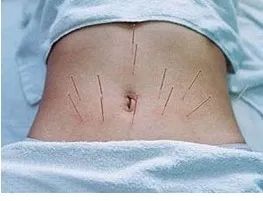
Function: Nourish blood, regulate menstruation, replenish true essence, warm the uterus, regulate menstruation, and promote fertility
Indications: Uterine cold deficiency, blocked cervix, infertility, impotence, abdominal pain, and distension.
Formula Explanation: All four points belong to the Ren meridian, with Zhong Ji being the uterus. The Ren, Chong, and Du meridians all originate from the uterus, thus forming a crucial connection. Qi Hai is the sea of Qi, where essence is stored. Guan Yuan is where men store essence and women store blood. Zhong Ji is the meeting point of the three Yin meridians and the Ren meridian, serving as the gateway to the uterus. The combination of these points can nourish the lower jiao, replenish essence and blood, and regulate menstruation.
24. Shen Que (神阙), Qi Hai (气海), Tian Shu (天枢), Shui Fen (水分)
Function: Warm the navel, disperse cold, and restore Yang and Qi
Indications: Lower jiao cold deficiency, navel pain, cholera, stroke, phlegm, and pediatric convulsions.
Formula Explanation: These five points are also known as the navel plum blossom points. Shen Que is a Ren meridian point that can rescue emergencies. Tian Shu is the meeting point of the Foot Yang Ming Stomach meridian, which can transform waste and separate clear from turbid. Qi Hai is the sea of Qi, which can nourish the Kidney and restore Yang. Shui Fen is a Ren meridian point that can strengthen the Spleen and promote fluid metabolism. The combination of these points can effectively nourish the Spleen, stop diarrhea, and warm the middle jiao.
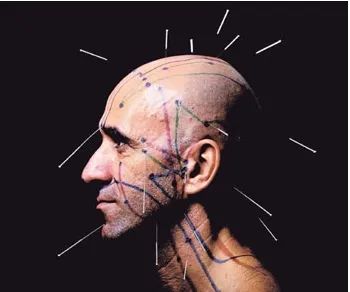
25. Chi Ze (尺泽), Wei Zhong (委中)
Function: Clear blood toxins, disperse evil
Indications: Cholera, anxiety, confusion, vomiting, diarrhea, and abdominal pain.
Formula Explanation: Chi Ze is the meeting point of the hand Shao Yin Lung meridian, which can clear blood toxins. Wei Zhong is the meeting point of the foot Tai Yang Bladder meridian, which can also clear heat. The locations of these two points are significant, as they are major blood vessels, thus allowing for effective bloodletting. The six evils of wind, cold, heat, dampness, dryness, and fire can all be expelled through these points.
26. Zu San Li (足三里)
Function: Raise clear Qi, descend turbid Qi, guide phlegm, and relieve stagnation, support the body and replenish essence
Indications: All diseases of the middle jiao, such as stomach pain, abdominal distension, cold stagnation, food retention, nocturnal emissions, eye diseases, breast abscesses, palpitations, fatigue, numbness in fingers, mania, stroke, Yang Ming heat, deficiency, and weakness.
Formula Explanation: The organs and limbs rely on Qi and blood for nourishment. If the stomach Qi is strong, digestion is smooth; if weak, it leads to death. The stomach is the foundation of postnatal life, the sea of food and drink, and governs digestion. If the stomach Qi is strong, food intake is smooth, and nourishment is sufficient; otherwise, the organs will suffer. Zu San Li is the meeting point of the stomach, a crucial point for promoting Yang and replenishing Qi and blood. It can also warm and transform cold stagnation, clear dampness, and resolve swelling, making it effective in conjunction with herbal formulas for tonifying the middle jiao.
27. San Yin Jiao (三阴交)
Function: Strengthen the Spleen, benefit Qi, nourish the Liver and Kidney, promote dampness and relieve stagnation, regulate Qi
Indications: Stomach pain, abdominal distension, indigestion, borborygmus, diarrhea, jaundice, diabetes, dizziness, insomnia, impotence, nocturnal emissions, hernia, urinary incontinence, hematuria, urinary difficulties, edema, pain in the genital area, hypertension, masses, dysmenorrhea, amenorrhea, excessive bleeding, leukorrhea, menstrual irregularities, paralysis, and beriberi. Contraindicated in pregnant women.
28. Yin Liang (音亮) (New Point)
Function: Clear the throat, open orifices
Location: In the slight depression between the lower edge of the thyroid cartilage and the upper edge of the cricoid cartilage along the anterior midline.
Indications: Sore throat, loss of voice, and aphasia.
Formula Explanation: This point is located above the Ren meridian and in front of the throat, making it effective for treating local throat conditions.
29. Thirteen Ghost Points
Composition: Ren Zhong (人中), Shao Shang (少商), Yin Bai (隐白), Da Ling (大陵), Shen Mai (申脉), Feng Fu (风府), Jia Che (颊车), Cheng Jiang (承浆), Lao Gong (劳宫), Shang Xing (上星), Hui Yin (会阴), Qu Chi (曲池), and She Xia (舌下)
Function: Open orifices, transform phlegm, awaken the mind, calm the heart, and enhance willpower
Indications: Epilepsy and mania
Formula Explanation: The “Thirteen Ghost Points” are important points for treating epilepsy and mania, created by Bian Que during the Spring and Autumn period. Later, Sun Simiao added to these points, making a total of fifteen. These points have become the main prescription for treating epilepsy and mania throughout history. The combination of these points can effectively open orifices, transform phlegm, awaken the mind, calm the heart, and enhance willpower.
Latest Addition to TCM’s Five Wonders: Yin Yang Bagua Needle Therapy, Exclusive Secret Techniques! (Needle for Yang Wool, Painless Needle Technique, Sub-lingual Bloodletting, Painless Bloodletting, Special Techniques) – March 16 in Shijiazhuang – Click to read more
30. Da Ling (大陵)
Function: Regulate Qi and relieve pain
Indications: Heel pain
Formula Explanation: Based on the principles of “treating lower diseases with upper points” and “cross-meridian needling,” this method is very effective for treating heel pain.
31. He Gu (合谷), Zhong Zhu (中渚)
Function: Regulate Qi, unblock meridians, relax tendons and joints
Indications: Inability to extend fingers.
Formula Explanation: He Gu is the source point of the hand Yang Ming, while Zhong Zhu is the transport point of the hand Shao Yang; both points are located on the back of the hand, making them effective for treating local conditions.
32. Zu San Li (足三里), Cheng Shan (承山)
Function: Regulate the stomach and intestines, relax tendons and resolve stasis
Indications: Blood hemorrhoids, dysentery, chest and abdominal stasis pain, cholera, and cramps.
Formula Explanation: Cheng Shan is a point of the foot Tai Yang Bladder meridian, which descends from the back, while Zu San Li is a point of the foot Yang Ming Stomach meridian, which descends from the chest and abdomen. The combination of these two points can effectively regulate the stomach and intestines, ensuring that if the stomach and intestines are harmonized, heat and toxins can be cleared, thus treating dysentery and hemorrhoids.
33. San Yin Jiao (三阴交), Zhi Yin (至阴)
Function: Unblock the lower jiao, regulate Qi and promote blood flow
Indications: Difficult labor, fetal demise, retained placenta, malposition, and amenorrhea.
Formula Explanation: Zhi Yin is the Jing point of the foot Tai Yang Bladder meridian, which can regulate the lower jiao Qi. San Yin Jiao is the meeting point of the three Yin meridians, thus the combination of these two points can effectively promote blood flow and regulate the lower jiao.
34. Huan Tiao (环跳), Feng Shi (风市), Yang Ling Quan (阳陵泉)
Function: Unblock and disperse, expel wind and dampness, relieve bi and pain, relax tendons and joints
Indications: Stroke, hemiplegia, various bi pains, numbness, spasms, and weakness in the lower limbs.
Formula Explanation: These three points can effectively unblock and disperse, expelling wind and dampness, relieving bi syndromes, and relaxing tendons and joints.
35. Da Zhui (大椎), Qu Chi (曲池), He Gu (合谷)
Function: Expel wind and resolve the exterior, harmonize Ying and Wei
Indications: External invasion of the six evils, malaria, and some febrile diseases.
Formula Explanation: Da Zhui belongs to the Du meridian, which governs Yang Qi and the exterior. For external invasion of the six evils, it can effectively disperse. Qu Chi and He Gu are both source points of the hand Yang Ming, which can promote Qi transformation and assist Da Zhui in harmonizing Ying and Wei, thus clearing the interior and reaching the exterior. If there is heat with spontaneous sweating, disperse Da Zhui to release the muscles. If there is no sweating and aversion to cold, tonify Da Zhui to promote the exterior. This method is effective for treating malaria and febrile diseases.
36. He Gu (合谷), Qu Chi (曲池), Wai Guan (外关)
Function: Clear heat, disperse wind, and promote the upper jiao
Indications: Headaches, facial swelling, tinnitus, hearing loss, hemoptysis, epistaxis, wrist and finger joint pain, and chest pain.
Formula Explanation: Qu Chi flows without restraint, while He Gu rises and disperses; Wai Guan is the Luo point of the hand Shao Yang, which connects with the Yang Wei meridian, thus effectively clearing heat and dispersing evil. The combination of these three points is effective for treating conditions of the head and face.
